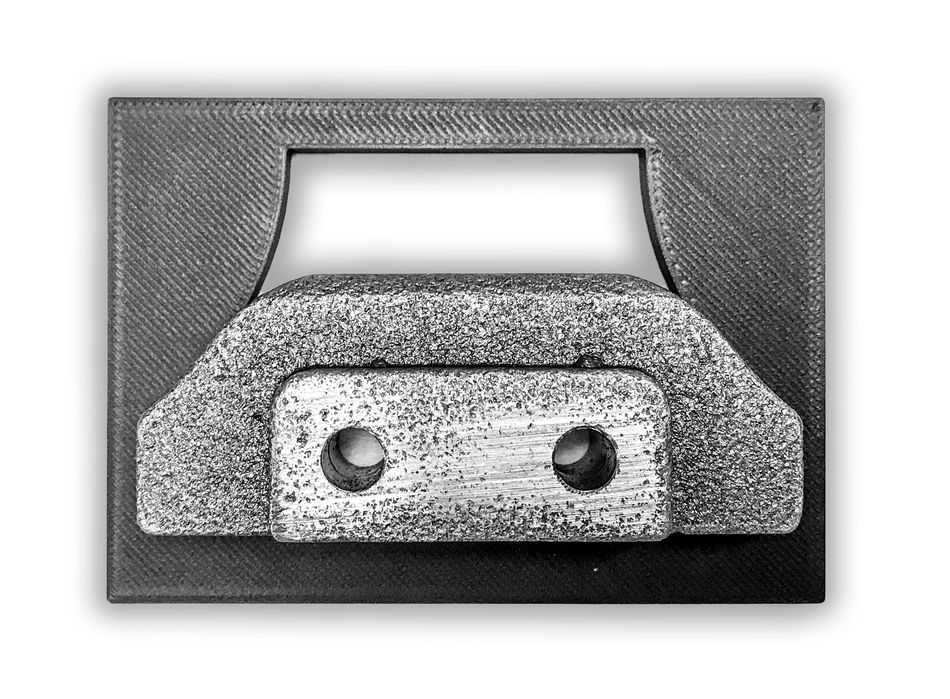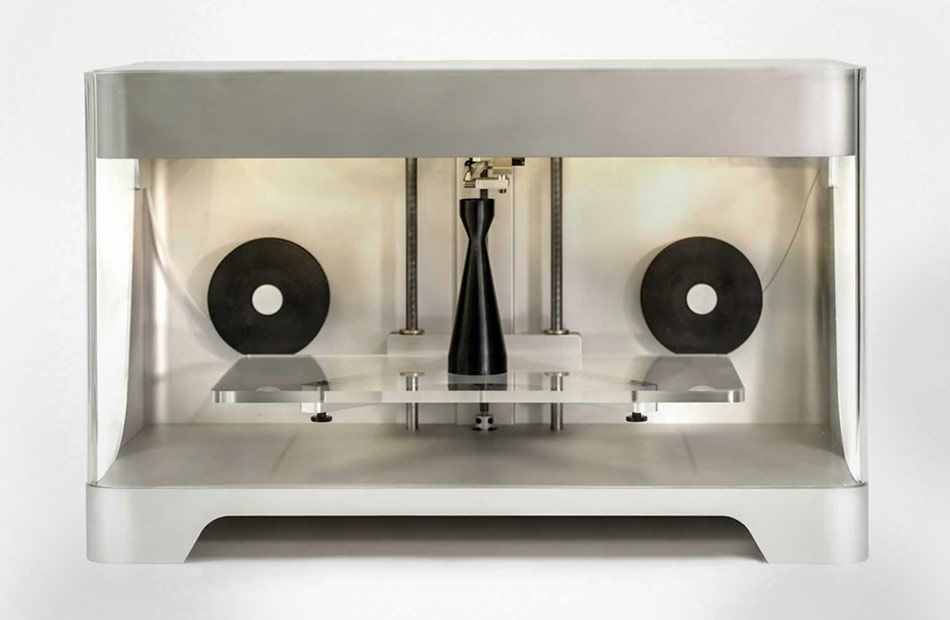The Future of the Aerospace Industry is Additive Manufacturing
For many years, the aerospace industry has been plagued by manufacturing challenges— limited capacity, complex geometries, strength requirements, and temperature resistance requirements, just to name a few.
For many years, the aerospace industry has been plagued by manufacturing challenges— limited capacity, complex geometries, strength requirements, and temperature resistance requirements, just to name a few.
However, companies in the aerospace industry are quickly realizing the value of additive manufacturing and strategically investing in it for various manufacturing processes.
Understanding Additive Manufacturing for Aerospace
Additive manufacturing, sometimes referred to as 3D printing, relies on data computer-aided-design (CAD) software to create objects layer by layer. The process is capable of utilizing a wide range of materials, such as:
- Titanium
- Aluminum
- Nickel-based compounds
- Cobalt chrome
- Steel
The aerospace and defense industry was an early adopter of additive technology and is now one of the market’s biggest contributors, accounting for roughly 18% of its global revenue in 2018.
According to MarketsandMarkets.com, the aerospace 3D printing market is projected to grow beyond $3 billion by 2022 due to the growing demand for lightweight 3D printed parts for aircraft engines. It is also a pioneering sector for additive manufacturing and is paving the way to serial production.
Better Performance from Fewer Parts
In 2018, GE was able to reduce the components in a civilian turboprop engine from 855 down to 12 via 3D printed parts, cutting its weight by 100 pounds, improving fuel efficiency by 20%, and increasing its power by 10%—all while reducing maintenance costs.
Additive technology offers a level of precision that previous manufacturing techniques are incapable of matching, allowing for more intricate designs. The resulting one-piece printed parts are also stronger and less prone to breakage, as there are no joints.
Coupled with CAD software, 3D printing has paved the way for lighter-weight components that require fewer parts. That consolidation cuts costs and lead times, streamlining the manufacturing process while improving the quality of its output.
Achieving FAA Certification: Honeywell Jumps Aerospace 3D Printing’s Biggest Hurdle
While 3D printed parts have long been used in non-critical applications in the aerospace industry, all safety-critical parts require U.S. Federal Aviation Administration (FAA) certification to fly in U.S. air space. Achieving this certification has been a primary roadblock standing in the way of the additive technology revolution in aircraft construction, but the road is clearing.
In August 2020, Honeywell’s #4/5 bearing housing became the first 3D printed safety-critical engine part to receive FAA approval. While the bearing housing is part of a mostly obsolete aircraft—the Dassault Falcon 20G—it demonstrates that additive manufacturing has the capacity to meet even more of the aerospace industry's needs and paves the way for more flight-critical parts to take to the skies.

A Driving Force for Change in Aerospace & Aviation Manufacturing
Additive manufacturing is transforming aerospace manufacturing, cutting costs, carbon emissions, material waste, and development times while allowing for component creation that was previously impossible.
Diminished Part Counts and Increased Product Complexity
Additive manufacturing grants superior design freedom and complexity, allowing for part consolidation, which can significantly reduce the cost and time associated with component creation.
The Simplicity of Workability and Reduced Waste
Although the materials used in added substance measures are more expensive, the decreased material waste and cost savings resulting from a simplified supply chain make up for the material expenses.
Less Weight
3D printing makes airplanes more secure, lighter, and more effective. The aerospace business requires quality, detectability, reasonableness, dependability, and advanced weight and execution. Additive manufacturing meets all of these needs.
More Flexible Production Planning
Additive manufacturing allows for manufacturing with more complex shapes, materials, and functions. For example, different materials can be used in different layers of a part as needed.
It also permits progressive complexity. Designers can plan multi-scale constructions from the microstructure through the mesostructure (scale sizes in the millimeter range) to the macrostructure.
Lower CO2 Emissions
The aeronautics industry produces around 2% of all human-initiated carbon dioxide (CO2) emissions worldwide. Aeronautical flights are liable for 12% of CO2 emissions from all vehicle sources, contrasted with 74% from street transport.
3D printed parts offer a way to reduce this impact, as they allow for lighter planes, which use less fuel.
Higher Material Efficiency Reduces Costs for Specific Components
Several metals are cornerstones in aerospace applications, such as light titanium composites and warmth-safe super-compounds. They are complex, costly, and generally troublesome.
Additive manufacturing represents a more effective way to use these materials. In contrast to conventional methods, additive manufacturing wastes less material and causes less wear and tear on cutting instruments.
Shorter Development Processes and Time to Market
Additive manufacturing permits fast prototyping, allowing manufacturers to skip tooling assembly and go directly to completed parts. This lets architects test different arrangements, discover client inclinations, and limit item dispatch hazards.

Common 3D Printing Use Cases in Aerospace
Since its first forays into additive manufacturing technology, the aerospace industry has steadily ramped up production, finding new and innovative ways to use 3D printing. Boeing alone now delivers nearly 1,000 3D printed parts. Common additively manufactured parts include jigs, fixtures, and brackets, among others.
Jigs & Fixtures
3D printing can produce jigs and fixtures at a much lower cost than traditional manufacturing methods. For the aerospace industry, this means that tooling can be quickly manufactured to produce low to medium runs of parts at a fraction of the price. With 3D printing, aerospace engineers don't have to take risks on high-cost tooling.
Surrogates
3D printing can produce surrogates, or placeholder parts, used throughout production to represent the final assembly, with more accuracy and less cost than other traditional manufacturing methods.
Mounting Brackets
Mounting brackets are low-volume metal brackets that are used to structurally attach life-saving equipment to an aircraft's interior walls. 3D printing commonly produces these for the aerospace industry.
Aerospace Companies Already Making Use of Additive Manufacturing
GE
In April 2015, GE Aviation received permission from the FAA to use a 3D-printed part in a commercial jet engine. The part produced, a sensor housing, is now being used in more than 400 GE90-94B engines on Boeing 777 jets.
Boeing
The Boeing Company is an American global organization that plans, produces, and sells planes, rotorcraft, rockets, satellites, broadcast communications gear, and rockets worldwide. Boeing is working on using 3D printing to make parts for its 787s.
Airbus
Airbus made history in 2014 when the first commercial airliner took to the skies with the first 3d printed metal part, a simple titanium bracket. Airbus found that every kilogram saved prevents 25 tons of C02 emissions during the lifespan of the aircraft. Since then, Airbus SE received the most orders in 2019 and surpassed its rival Boeing.
NASA & Made in Space
NASA has entered into a $73.7 million agreement with Made in Space to collaborate to produce parts. 3D printing is solving a number of logistical and repair challenges that NASA faced onboard the international space station and provides an excellent case study for future trips to the moon and beyond.
The Commercialization of Additive Manufacturing
Additive manufacturing is also picking up steam in the commercial manufacturing and fabrication space. Metal fabrication companies across the world who traditionally work with subtractive methods such as CNC machining have now begun offering additive manufacturing options as well.
Many fabricators, such as The Federal Group USA in Michigan, have even received grants that have allowed them to enter the ALM space more rapidly. With the ability to produce high-tolerance parts and rapid prototypes at a significantly lower cost, 3D printing is quickly becoming one of the cornerstones of the Industry 4.0 movement.

